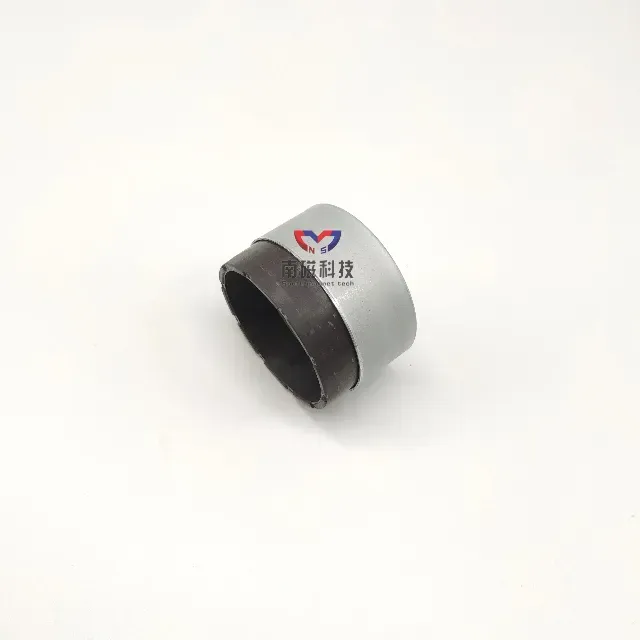Choosing the right magnet for a brushless motor is crucial for achieving optimal performance, efficiency, and durability. The magnet inside a brushless motor influences its torque, speed, efficiency, and thermal stability. Here’s a detailed guide on selecting the best magnet for your brushless motor:
1. Consider the Magnet Material
The most common magnet materials used in brushless motors are Neodymium (NdFeB), Samarium Cobalt (SmCo), and Ferrite. Each has its advantages and limitations:
- Neodymium (NdFeB): Known for its high magnetic strength, neodymium magnets enable higher torque and power density. However, they are sensitive to high temperatures and can lose magnetism if not adequately protected.
- Samarium Cobalt (SmCo): This material has excellent thermal stability and corrosion resistance, making it suitable for high-temperature applications. Although generally more expensive, SmCo magnets are reliable for high-performance motors.
- Ferrite (Ceramic): Ferrite magnets are cost-effective and stable at high temperatures, but they are weaker in magnetic strength. They are suitable for applications where cost is a significant factor and high torque is not required.
2. Evaluate Temperature Stability
Brushless motors generate heat during operation, and different magnet types handle heat differently:
- High-temperature stability: If the motor operates in high-heat environments or under heavy load, choose materials like Samarium Cobalt, as they have a higher Curie temperature (the point at which magnets start losing their magnetism) than Neodymium.
- Temperature grades: Neodymium magnets come in various grades, such as N, H, SH, UH, EH, and AH, which indicate their maximum working temperatures. Higher-grade Neodymium magnets (e.g., N45SH or N52UH) are better for high-temperature environments.

3. Consider the Magnet Shape and Size
- Shape: For brushless motors, arc-shaped magnets are common as they provide a uniform magnetic field in the air gap, improving motor efficiency and reducing cogging torque. Other shapes, such as rectangular or segmented magnets, can also be used depending on design requirements.
- Size: The size of the magnet will influence the motor’s power output and overall performance. Larger magnets produce stronger fields, which can increase torque but may also require a larger motor casing and additional cooling considerations.
4. Magnet Coating and Corrosion Resistance
- Coating: Neodymium magnets, in particular, are prone to oxidation and corrosion, so they often require coatings like nickel, epoxy, or gold plating to protect them from the environment.
- Corrosion resistance: Samarium Cobalt is naturally more corrosion-resistant than Neodymium and doesn’t typically require additional coatings, making it ideal for motors used in harsh or humid environments.
5. Check for Magnetic Strength and Grade
- Magnetic grade: This indicates the strength of the magnet and is expressed with an “N” rating (e.g., N35, N42, N52). A higher grade means a stronger magnetic field, which enhances the motor’s torque and efficiency. However, higher grades can be more expensive and may require more advanced thermal management.
- Air gap flux density: The magnetic field strength in the air gap between the rotor and stator affects the motor’s torque and power. Ensure the magnet provides sufficient flux density to achieve the desired performance while balancing other factors like cost and temperature resistance.
6. Cost Considerations
Higher-grade magnets and those with high thermal stability (e.g., SmCo and high-grade NdFeB) are often more costly. If the motor’s application doesn’t demand high torque or high-temperature performance, Ferrite magnets can be a cost-effective solution.
7. Application-Specific Requirements
- High-speed applications: For motors running at high speeds, lower-weight magnets with high magnetic strength and good thermal stability (e.g., NdFeB) are suitable.
- High-power or industrial motors: Industrial or high-power brushless motors may benefit from SmCo magnets due to their excellent thermal stability and high magnetic performance.
- Environment: In environments with high moisture or corrosive substances, opt for magnets with corrosion resistance or those that come with protective coatings.
8. Testing and Simulation
To ensure the chosen magnet type meets your performance goals, conduct simulations or prototype testing under expected operating conditions. Simulation tools can provide insights into magnetic flux distribution, torque output, and thermal behavior, helping you make adjustments before finalizing the magnet choice.
Conclusion
Selecting the right magnet for a brushless motor involves balancing factors such as magnetic strength, temperature resistance, shape, and cost. By considering the motor's specific application and environmental requirements, you can make an informed choice that ensures reliable, efficient, and long-lasting motor performance.
South Magnet Technology is one of the professional Injection Mold Magnet manufacturers and suppliers in China. Welcome to contact us at [email protected].